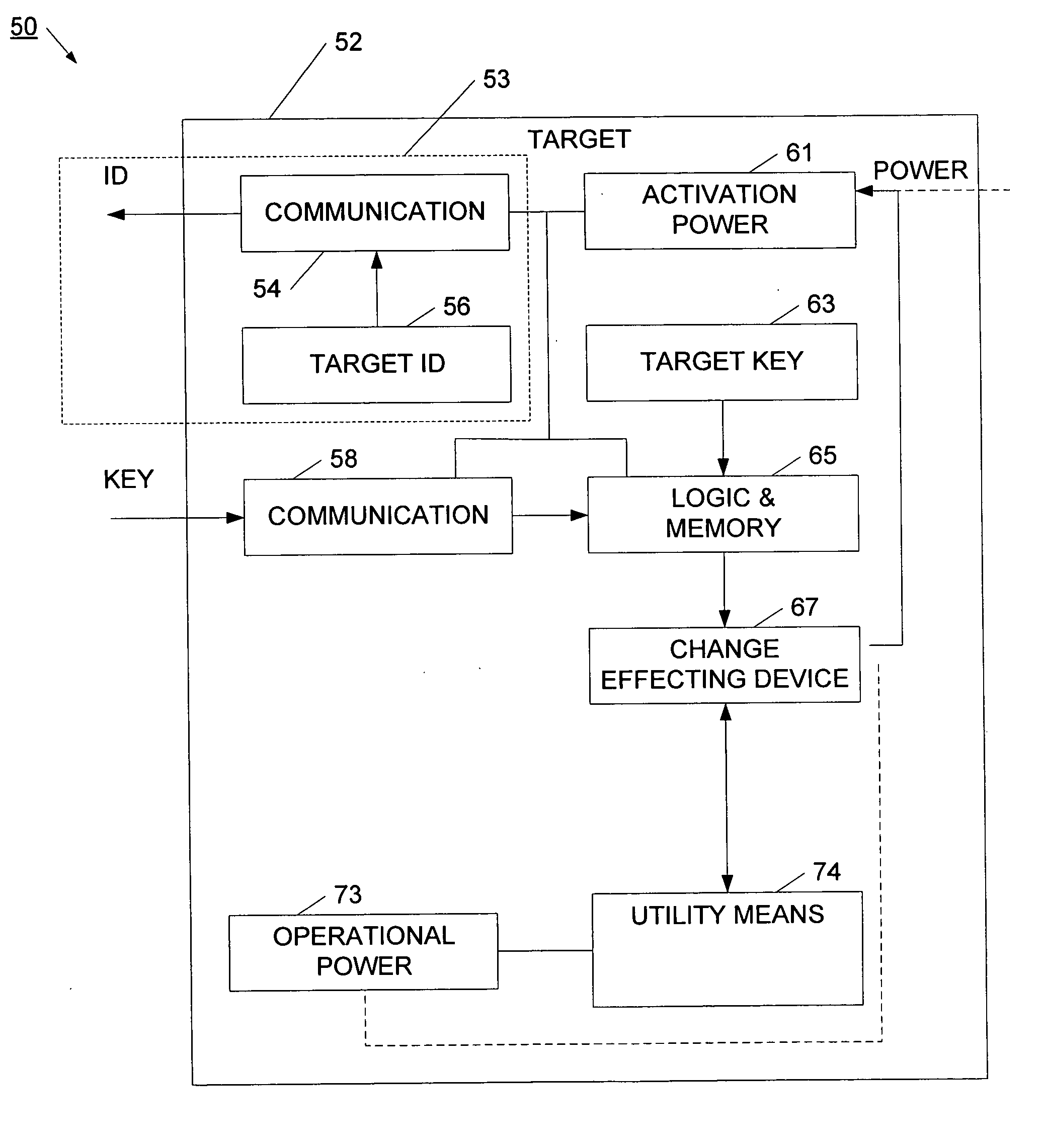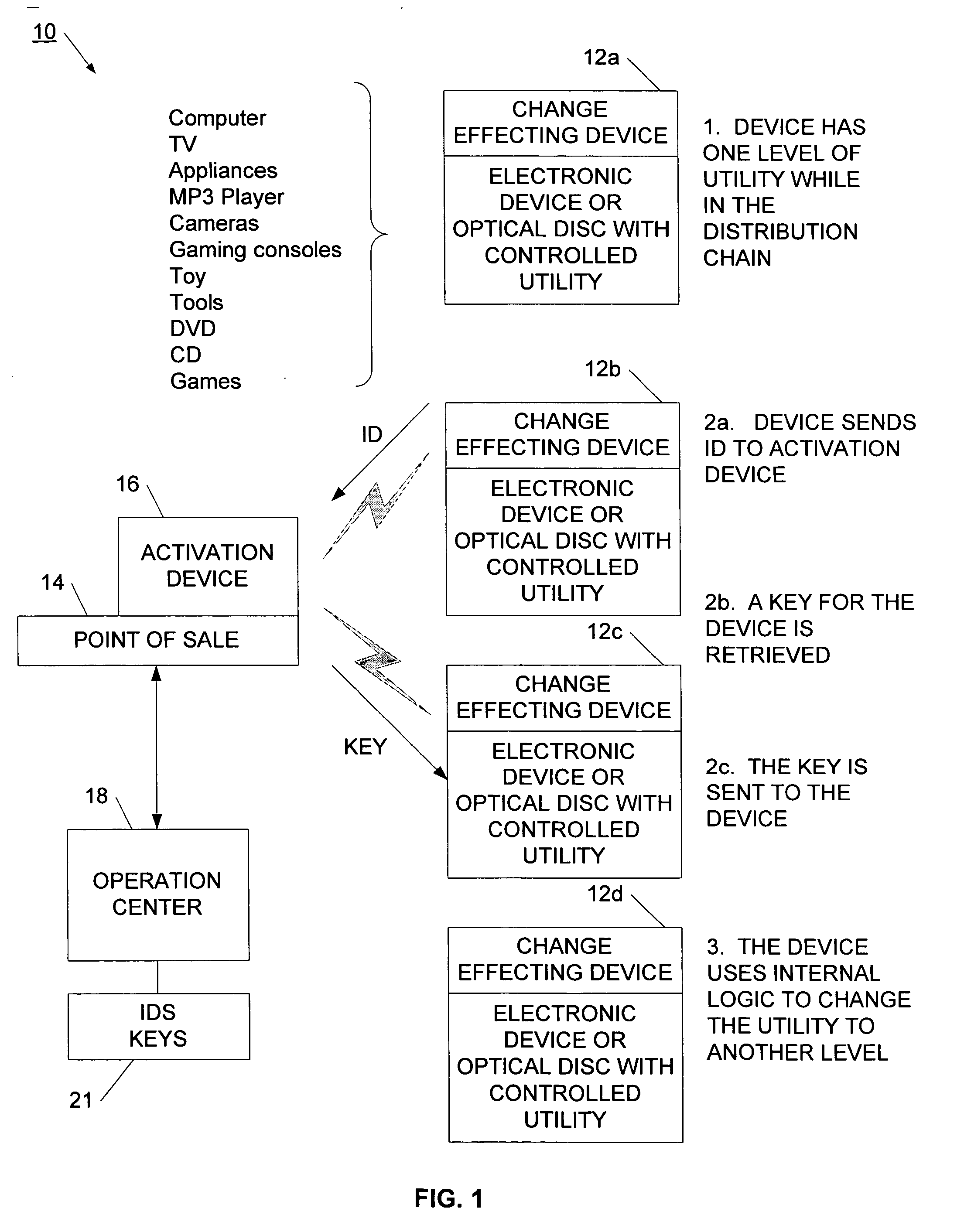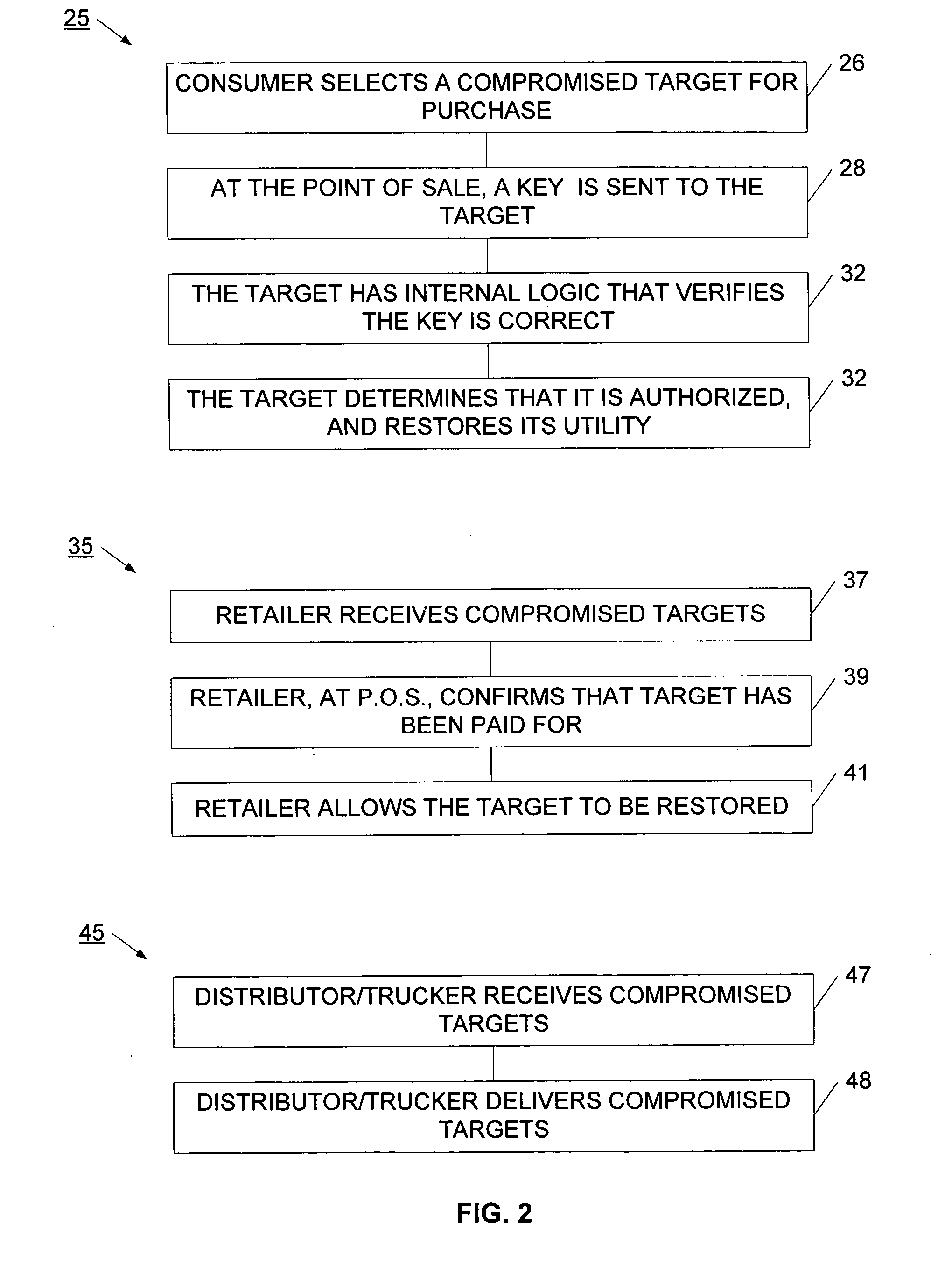Method and network for selectively controlling the utility a target
a technology for targeting and utility, applied in the field of selective control of utility targets, can solve the problems of increasing theft threat of products, devices such as digital cameras, dvd players, mp3 players, etc., and achieve the effect of reducing the threat of th
- Summary
- Abstract
- Description
- Claims
- Application Information
AI Technical Summary
Benefits of technology
Problems solved by technology
Method used
Image
Examples
Embodiment Construction
[0062] Referring now to FIG. 1, a system for controlling the utility of a target is illustrated. System 10 is illustrated with a target 12 at various points in a chain of distribution. Target 12 may be an electronic device such as a computer, TV, appliance, MP3 player, camera, game counsel, or toy. In another example, the target may be a tangible media, such as an optical disc, DVD, CD, or game cartridge. During manufacture or preparation of the target 12, the target has been associated with a change effecting device. The change effecting device is used to control the utility available for the target or for use of the target. More particularly, the change effecting device has multiple states, with each state being associated with an available state of utility for the target. In a specific application, the change effecting device may be switched between two available states of utility.
[0063] As shown at block 12a, when the target enters the distribution chain, the target is set to h...
PUM
 Login to View More
Login to View More Abstract
Description
Claims
Application Information
 Login to View More
Login to View More - R&D
- Intellectual Property
- Life Sciences
- Materials
- Tech Scout
- Unparalleled Data Quality
- Higher Quality Content
- 60% Fewer Hallucinations
Browse by: Latest US Patents, China's latest patents, Technical Efficacy Thesaurus, Application Domain, Technology Topic, Popular Technical Reports.
© 2025 PatSnap. All rights reserved.Legal|Privacy policy|Modern Slavery Act Transparency Statement|Sitemap|About US| Contact US: help@patsnap.com



